
MapCode :
161 713 165*00
Description :
Otsuki Station is a major railway gateway to the Mt. Fuji, Fuji Five Lakes region. It has both a Toyota and a Nippon Rent-A-Car outlet within a block or two of the station so it is a good place to start your Mt. Fuji area adventure. It takes about 1 hour by express train from Shinjuku Station in Tokyo to Otsuki Station. A major benefit of using Otsuki Station (from Shinjuku Station in Tokyo) is that you can stop at the Yamanashi Prefectural Maglev Exhibition Center (MapCode: 161 591 554*52) on the way to Kawaguchi-ko and the Lake Kawaguchi area. The "Linear Chuo Shinkansen"f will be the fastest bullet train in the world with a speed approximately twice that of current Shinkansen at 500 km/h (310 mph) connecting Yamanashi Prefecture and Tokyo in approximately 25 minutes and Tokyo and Osaka in a mere one hour. The Tokyo to Nagoya link is projected to be completed by 2027.
Otsuki Station (Otsuki-eki) is a railway station in Otsuki-shi (Otsuki City), Yamanashi-ken (Yamanashi Prefecture) operated by East Japan Railway Company (JR East) and the private railway operator Fuji Kyuko Railway. The station averages about 5,100 boarding passengers per day. The station has a Midori no Madoguchi (みどりの窓口, literally "green window") with a MARS (マルス Marusu, which stands for Multi Access seat Reservation System) capable of selling reserved seats throughout the entire JR system. The station also serves as a bus station hub.
Courtesy of Wikipedia
Otsuki Station (Otsuki-eki) is a railway station in Otsuki-shi (Otsuki City), Yamanashi-ken (Yamanashi Prefecture) operated by East Japan Railway Company (JR East) and the private railway operator Fuji Kyuko Railway. The station averages about 5,100 boarding passengers per day. The station has a Midori no Madoguchi (みどりの窓口, literally "green window") with a MARS (マルス Marusu, which stands for Multi Access seat Reservation System) capable of selling reserved seats throughout the entire JR system. The station also serves as a bus station hub.
Courtesy of Wikipedia
Address :
1 Chome-1 Otsuki, Yamanashi 401-0013
4.9
km / 3.0
miles
-
(12
minutes)
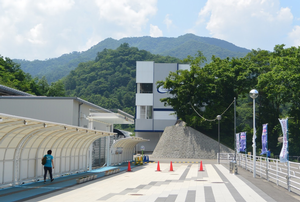

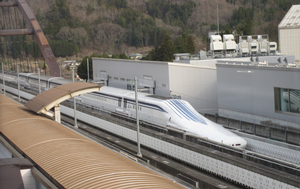
Min/Max Time :
30 / 60
Minutes
MapCode :
161 591 554*52
Phone :
055-445-8121
Description :
The Linear Chuo Shinkansen will be the fastest bullet train in the world with a speed approximately twice that of current Shinkansen at 500 km/h (310 mph) connecting Yamanashi Prefecture and Tokyo in approximately 25 minutes and Tokyo and Osaka in a mere one hour.
Operation is planned to begin between Tokyo and Nagoya in 2027.
At the Maglev Exhibition Center that opened in conjunction with the commencement of testing at the Yamanashi Maglev Test Track, guests will be able to see tests with their own eyes and also learn about superconductive linear mechanisms and the Linear Chuo Shinkansen plan in detail.
Operation is planned to begin between Tokyo and Nagoya in 2027.
At the Maglev Exhibition Center that opened in conjunction with the commencement of testing at the Yamanashi Maglev Test Track, guests will be able to see tests with their own eyes and also learn about superconductive linear mechanisms and the Linear Chuo Shinkansen plan in detail.
Hours :
Open Daily 09:00 - 17:00. Closed Mondays.
Address :
2381 Ogatayama, Tsuru, Yamanashi 402-0006
20.8
km / 12.9
miles
-
(22
minutes)
Min/Max Time :
15 / 45
Minutes
MapCode :
161 212 835*03
Phone :
055-572-0259
Website :
Description :
The Fujisan World Heritage Center has various educational exhibits and dioramas explaining the geology and history of Fujisan as a World Heritage Site.
Hours :
Open Daily 09:00 – 17:00
Address :
6663-1 Funatsu, Fujikawaguchiko, Minamitsuru District, Yamanashi 401-0301
5.4
km / 3.3
miles
-
(10
minutes)
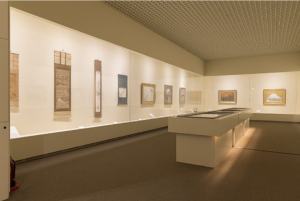

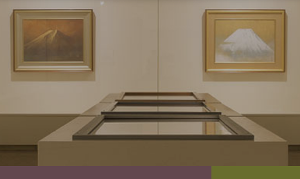
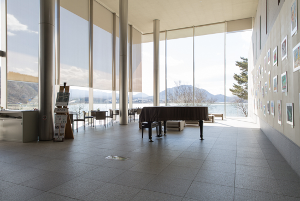
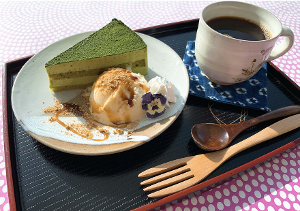
Min/Max Time :
15 / 60
Minutes
MapCode :
161 332 835*41
Phone :
055-573-8666
Website :
Description :
The Kawaguchiko Museum of Art focuses on several themes. In particular it showcases art showing Mt. Fuji. It has annual exhibitions and competitions, including in photography. Although not large the artwork is worth a visit and there is a relaxing cafe in the museum as well.
Hours :
Open Daily 09:30 – 17:00. Closed Tuesday.
Address :
3170 Kawaguchi, Fujikawaguchiko, Minamitsuru-gun, Yamanashi 401-0304
0.5
km / 0.3
miles
-
(1
minutes)

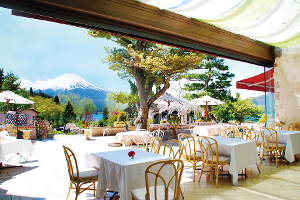

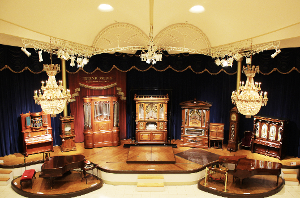
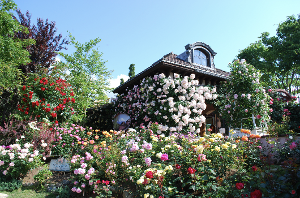
Min/Max Time :
15 / 90
Minutes
MapCode :
161 362 288*66
Phone :
055-520-4111
Website :
Description :
When you step inside the Kawaguchiko Music Forest Museum, you will feel like you are in a "small European country without a passport." It is a paradise of music and flowers where you can enjoy world-famous music boxes and self-playing musical instruments, in particular, the automatically-playing musical instruments and the world's largest dance organ, which was scheduled to be installed on the luxury liner "Titanic", reproduce the sounds that revive over time. There are flowers that can be enjoyed in each season, including one of Japan's leading rose gardens. The two major shows, "Sand Art Live" and "Collaboration Concert with Auto-playing Musical Instruments and Opera Singer" are a must see!
Hours :
Open Daily 09:30 – 18:00
Address :
3077-20 Kawaguchi, Fujikawaguchiko, Minamitsuru-gun, Yamanashi 401-0304
1.1
km / 0.7
miles
-
(2
minutes)
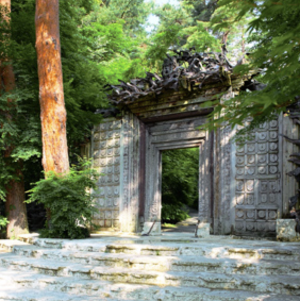
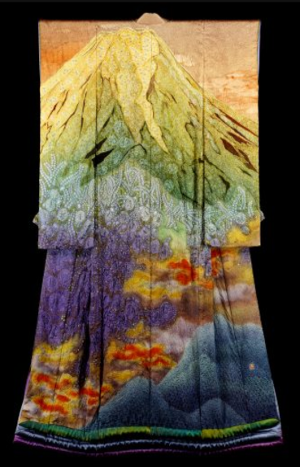
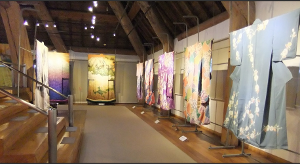



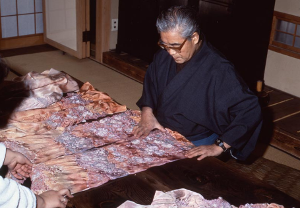
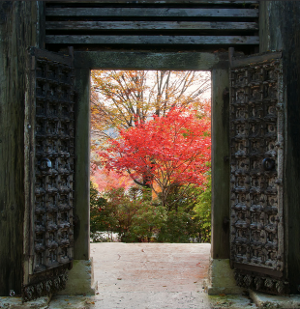
Min/Max Time :
30 / 90
Minutes
MapCode :
161 361 796*03
Phone :
055-576-8811
Website :
Description :
The Itchiku Kubota Art Museum was built in 1994 by Itchiku Kubota (1917-2003) a celebrated textile dyer, for the permanent exhibition of his work. In addition to the works, all the gardens and buildings represent the world of Itchiku. The uniqueness of the museum makes this a "must see" in Kawaguchiko. The buildings themselves were inspired by Gaudi.
There is an exhibition of about 30 kimonos that incorporate dyeing techniques from the Muromachi period (1336-1573) called “Tsuji-ga-Hana” that are fascinating with their fine and majestic designs. The works are rotated by seasons, and the kimonos are displayed in line with each theme, such as the “Four Seasons”, "Space”, etc. The famouse Japanese artist (Takamizawa of THE ALFEE) used the Kimono in one of his concerts. Also other Kimono was used in the Takarazuka Revue.
There is an exhibition of about 30 kimonos that incorporate dyeing techniques from the Muromachi period (1336-1573) called “Tsuji-ga-Hana” that are fascinating with their fine and majestic designs. The works are rotated by seasons, and the kimonos are displayed in line with each theme, such as the “Four Seasons”, "Space”, etc. The famouse Japanese artist (Takamizawa of THE ALFEE) used the Kimono in one of his concerts. Also other Kimono was used in the Takarazuka Revue.
Hours :
Open Daily 09:30 – 17:30. Closed Tuesday.
Address :
2255 Kawaguchi, Fujikawaguchi-ko, Minamitsuru, Yamanashi, 401-0304
0.9
km / 0.6
miles
-
(3
minutes)

Min/Max Time :
5 / 15
Minutes
MapCode :
161 361 157*44
Description :
The Nagasaki Park is a pleasant little park off the main Highway #21 that provides a scenic drive along the north shores of both Lake Kawaguchi and Lake Saiko. It is a nice place to stop and take a photo of Mt. Fuji across Lake Kawaguchi.
Hours :
Open daily 24/7
Address :
Oishi, Fujikawaguchiko, Minamitsuru District, Yamanashi 401-0305
1.3
km / 0.8
miles
-
(3
minutes)
Min/Max Time :
10 / 30
Minutes
MapCode :
59 089 325*82
Description :
Oshi Park is probably the best viewing spot to see Mt. Fuji across Lake Kawaguchi. It is located next to the Kawaguchiko Natural Living Center so there is plenty of parking, food, and shopping. There is even a small local market with local produce for sale (http://www.seikatsukan.jp/; Tel: 0555-76-8230; open daily 09:00-18:00).
Hours :
Open daily 24/7
Address :
Oishi, Fujikawaguchiko, Minamitsuru District, Yamanashi 401-0305
6.3
km / 3.9
miles
-
(11
minutes)
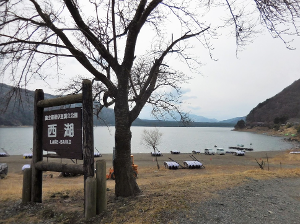
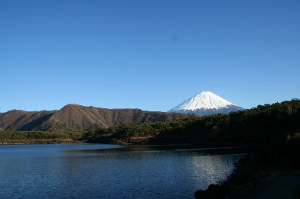
Min/Max Time :
5 / 20
Minutes
MapCode :
59 024 240*30
Description :
The Lake Sai Park is located right along Highway #21 that follows the north shore of both Lake Kawaguchi and Lake Saiko. (Sai-ko or Saiko, actually means "west lake".) This is picturesque stopping point for photos or just to relax. There is a boat rental shop and a small restaurant across the street.
Western Lake (西湖, Saiko), sometimes Saiko, is one of the Fuji Five Lakes and located in the town of Fujikawaguchiko in southern Yamanashi Prefecture near Mount Fuji, Japan.
It is the fourth of the Fuji Five Lakes in terms of surface area, and second deepest, with a maximum water depth of 71.1 metres (233 ft).[1] Its surface elevation of 900 metres (3,000 ft) is the same as for Lake Motosu and Lake Shōji, confirming that these three lakes were originally a single lake, which was divided by an enormous lava flow from Mount Fuji during an eruption from 864 to 868 AD.[2] The remnants of the lava flow are now under the Aokigahara Jukai Forest, and there is evidence to indicate that these three lakes remain connected by underground waterways.[1]
The lake is within the borders of the Fuji-Hakone-Izu National Park.[3]
Saiko has no natural drainage, but an artificial channel now connects it to Lake Kawaguchi. As with the other Fuji Five Lakes, the area is a popular resort, with many lakeside hotels, windsurfing facilities, camp sites, and excursion boats. Japanese crucian carp, wakasagi and Kunimasu were introduced to the lake in the Meiji period, and sports fishing is also popular.
However, Kunimasu, which had been introduced to a number of lakes in Japan in the Taishō period were believed to have died out and become extinct, with the last reported sighting in 1935, until rediscovered in Lake Sai in 2010.[4]
West Lake in Hangzhou, China, is written with the same kanji as Lake Sai.
Courtesy of Wikipedia
Western Lake (西湖, Saiko), sometimes Saiko, is one of the Fuji Five Lakes and located in the town of Fujikawaguchiko in southern Yamanashi Prefecture near Mount Fuji, Japan.
It is the fourth of the Fuji Five Lakes in terms of surface area, and second deepest, with a maximum water depth of 71.1 metres (233 ft).[1] Its surface elevation of 900 metres (3,000 ft) is the same as for Lake Motosu and Lake Shōji, confirming that these three lakes were originally a single lake, which was divided by an enormous lava flow from Mount Fuji during an eruption from 864 to 868 AD.[2] The remnants of the lava flow are now under the Aokigahara Jukai Forest, and there is evidence to indicate that these three lakes remain connected by underground waterways.[1]
The lake is within the borders of the Fuji-Hakone-Izu National Park.[3]
Saiko has no natural drainage, but an artificial channel now connects it to Lake Kawaguchi. As with the other Fuji Five Lakes, the area is a popular resort, with many lakeside hotels, windsurfing facilities, camp sites, and excursion boats. Japanese crucian carp, wakasagi and Kunimasu were introduced to the lake in the Meiji period, and sports fishing is also popular.
However, Kunimasu, which had been introduced to a number of lakes in Japan in the Taishō period were believed to have died out and become extinct, with the last reported sighting in 1935, until rediscovered in Lake Sai in 2010.[4]
West Lake in Hangzhou, China, is written with the same kanji as Lake Sai.
Courtesy of Wikipedia
Hours :
Open daily 24/7
Address :
Saiko, Fujikawaguchiko, Minamitsuru District, Yamanashi 401-0332
4.2
km / 2.6
miles
-
(8
minutes)
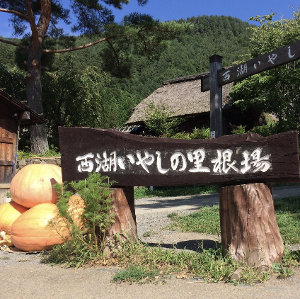
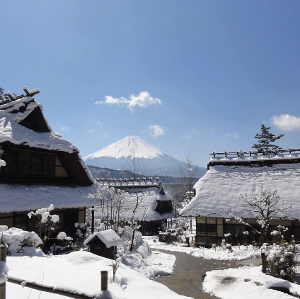
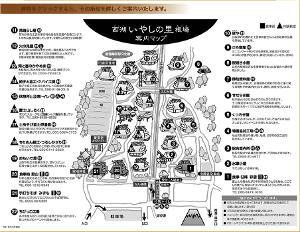

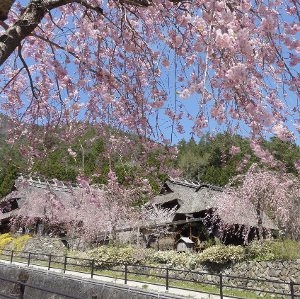
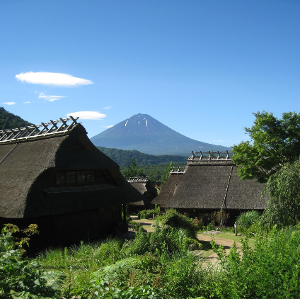
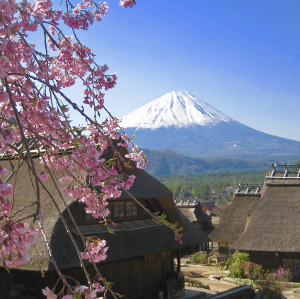
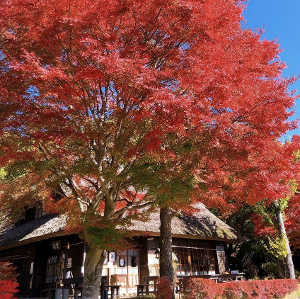
Min/Max Time :
20 / 90
Minutes
MapCode :
59 019 202*74
Phone :
055-520-4677
Website :
Description :
The Saiko Iyashi-no-Sato Nenba is a reconstructed Japanese village showing old traditional architecture and way of life. The farm houses are built in the gassho-zukuri (praying hands) style. There are beautiful views of the village with Mt. Fuji in the background in all four seasons.
If you have seen this kind of traditional Japanese village elsewhere in Japan you can skip it on this itinerary.
If you have seen this kind of traditional Japanese village elsewhere in Japan you can skip it on this itinerary.
Hours :
Open Daily 09:00 – 17:00
Address :
2710 Nevaba, Saiko, Fujikawaguchiko, Minamitsuru District, Yamanashi 401-0332
1.5
km / 0.9
miles
-
(4
minutes)

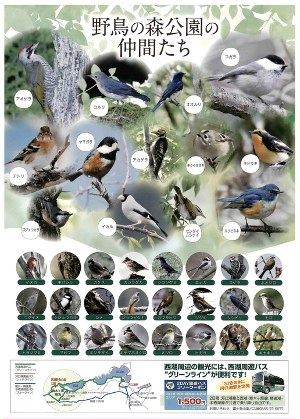
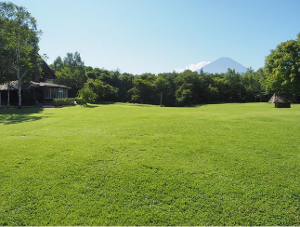
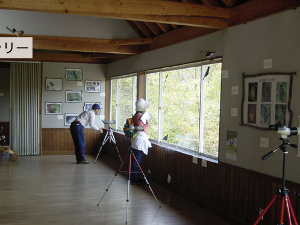
Min/Max Time :
10 / 60
Minutes
MapCode :
689 574 392*28
Phone :
055-520-4655
Website :
Description :
The Saiko Wild Bird Forest Park is located in the Aokigahara Forest where over 200 species of wild birds visit. There is a nature center and a bird watching room equipped with a telescope, a workshop for woodworking, and an exhibition room. It is recommended that one spend some time at the park so you can listen slowly to the chirping of wild birds.
Located on Highway #21 west of Lake Sai itself.
Located on Highway #21 west of Lake Sai itself.
Hours :
Open Daily 09:00 – 17:00. Closed Thursdays.
Address :
11-8 Saikonishi, Fujikawaguchiko, Minamitsuru District, Yamanashi 401-0333
2.4
km / 1.5
miles
-
(5
minutes)
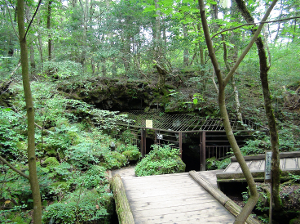
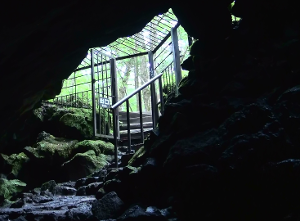
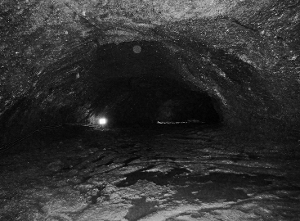
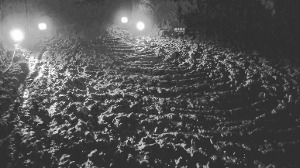


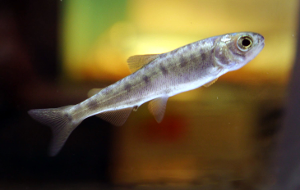
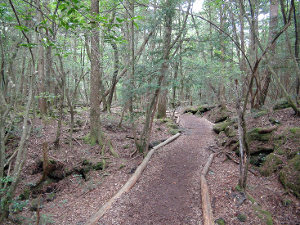
Min/Max Time :
30 / 60
Minutes
MapCode :
689 545 838*03
Phone :
055-582-3111
Description :
The Lake Sai Bat Cave is in an ancient lava tube in the Aokigahara Forest which was created by a lava flow from an eruption of Mt. Fuji in 864 (that also created Lake Shoji and Lake Sai). There is a walk through an interesting part of the forest to get to the cave entrance and then stairs to climb down into the cave. The cave is the longest of the 3 major caves in Aokigahara. The others are the Fugaku Wind Cave (MapCode: 689 484 816*11), and the Narusawa Cave (MapCode: 689 485 582*60); all 3 were designated National Monuments of Japan in 1929). It is located at 925 m/3035 ft above sea level and is 386.5 m/1268 ft long.
The Lake Sai Nature Center is located next to the entrance to the Bat Cave. Walking tours through Aokigahara Forest can be arranged with Fujikawaguchiko, Yamanashi-approved tour guides. Next to the Nature Center is an exhibition hall of Kunimasu trout which was declared extinct around 1945 in Lake Tazawa, Akita Prefecture in northern Honshu but was then discovered in Lake Sai in 2010.
Courtesy of Wikipedia
The Lake Sai Nature Center is located next to the entrance to the Bat Cave. Walking tours through Aokigahara Forest can be arranged with Fujikawaguchiko, Yamanashi-approved tour guides. Next to the Nature Center is an exhibition hall of Kunimasu trout which was declared extinct around 1945 in Lake Tazawa, Akita Prefecture in northern Honshu but was then discovered in Lake Sai in 2010.
Courtesy of Wikipedia
Hours :
Open daily 09:00 – 17:00
Address :
2068 Saiko, Fujikawaguchiko, Minamitsuru-gun, Yamanashi 401-0332
2.5
km / 1.6
miles
-
(5
minutes)
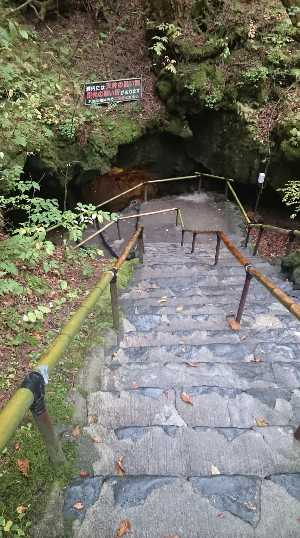

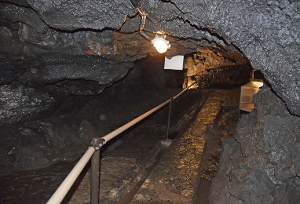
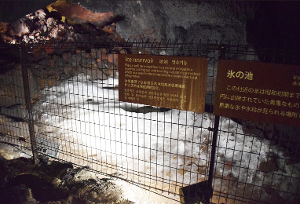
Min/Max Time :
30 / 60
Minutes
MapCode :
689 484 816*11
Phone :
055-585-2300
Description :
The Fugaku Wind Cave is in an ancient lava tube in the Aokigahara Forest which was created by a lava flow from an eruption of Mt. Fuji in 864 (that also created Lake Shoji and Lake Sai). The cave is one of the 3 major caves in the Aokigahara Forest area. The others are the Lake Sai Bat Cave (MapCode: 689 545 838*03), and the Narusawa Ice Cave (MapCode: 689 485 582*60); all 3 were designated National Monuments of Japan in 1929). It is 201 m/659 ft long with an average height of 8.7 m/29 ft. Its name derives from Fugaku (富岳), a literary name for Mt. Fuji (富士山), and Fūketsu (風穴) for wind cave because there is enough circulation of air on the cave. The walls of the cave are mostly made of basalt. Inside the cave, there are icicles even in summer, lava terraces and rope-like lava forms. From the Edo period to the Meiji period (1603 to 1912) this cave was used to keep silk worm eggs.
Courtesy of Wikipedia
Courtesy of Wikipedia
Hours :
Open Daily 09:00 – 16:30
Address :
Aokigahara-2068-1 Saiko, Fujikawaguchiko, Minamitsuru-gun, Yamanashi 401-0332
1.1
km / 0.7
miles
-
(3
minutes)

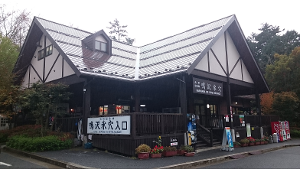
Min/Max Time :
30 / 45
Minutes
MapCode :
689 485 582*60
Phone :
055-585-2301
Website :
Description :
The Narusawa Ice Cave is in an ancient lava tube in the Aokigahara Forest which was created by a lava flow from an eruption of Mt. Fuji in 864 (that also created Lake Shoji and Lake Sai). The cave is 1 of the 3 major caves in the Aokigahara Forest area. The others are the Fugaku Wind Cave (MapCode: 689 484 816*11), and the Lake Sai Bat Cave (MapCode: 689 545 838*03); all 3 were designated National Monuments of Japan in 1929). It is 156 m/512 ft long with two lobes. It has a width of 1.5-11 m/5-36 ft and the height of 1-3.6 m/3-12 ft. The average temperature inside the cave is about 3° C/37° F. The cave was long used as a natural refrigerator. During the Edo period (1603-1868) ice cut in this cave was sent to the shōgun and his entourage in Edo. During the early 1900s ice made here was used in refrigerators before the electric refrigerator arrived.
Courtesy of Wikipedia
Courtesy of Wikipedia
Hours :
Open Daily 09:00 – 17:15
Address :
8533 Narusawa, Minamitsuru-gun, Yamanashi 401-0320
3.2
km / 2.0
miles
-
(9
minutes)
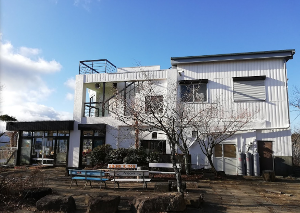
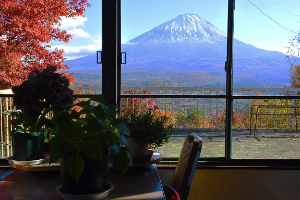
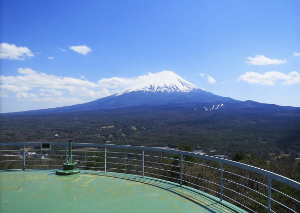
Min/Max Time :
10 / 30
Minutes
MapCode :
689 516 626*36
Phone :
055-585-2252
Description :
The Koyodai Observatory provides a panoramic view of Mt. Fuji and the surrounding countryside. Note that the road is narrow and winding to get up to the observatory.
If you are running short of time you can skip this site.
If you are running short of time you can skip this site.
Hours :
Open Daily 08:30 – 17:00
Address :
8527 Narusawa, Minamitsuru-gun, Yamanashi 401-0320
11.5
km / 7.2
miles
-
(23
minutes)
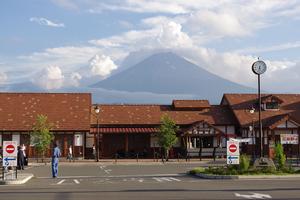
MapCode :
161 272 349*22
Website :
Description :
Kawaguchiko Station is the most centrally located railway gateway to the Mt. Fuji, Fuji Five Lakes region. It has both a Toyota and a Nippon Rent-A-Car outlet within a block or two of the station (in addition to several local brands) so it is a good place to start your Mt. Fuji area adventure. It takes about 2 hours by train from Shinjuku Station in Tokyo to Kawaguchi-ko Station with several express through trains but mostly requiring a change of trains in Otsuki Station.
The Kawaguchiko Station (河口湖駅, Kawaguchiko-eki) is a railway station on the Fujikyuko Line in Fujikawaguchiko, Yamanashi Prefecture. It is conveniently located in the center of the Fuji Five Lakes region near the base of Mt. Fuji. It has a tourist information center attached. There are a variety of rental car outlets in the area.
The station forms the terminus of the 26.6 km/16.5 mi privately operated Fujikyuko Line from Ōtsuki. The station is staffed and consists of two island platforms serving three tracks, numbered 1 to 3. Passengers access the platforms via a level crossing. It has waiting rooms and toilet facilities. It is located at an altitude of 857 m/2,812 ft. In fiscal 2015, the station was used by an average of 2903 passengers daily.
Courtesy of Wikipedia
The Kawaguchiko Station (河口湖駅, Kawaguchiko-eki) is a railway station on the Fujikyuko Line in Fujikawaguchiko, Yamanashi Prefecture. It is conveniently located in the center of the Fuji Five Lakes region near the base of Mt. Fuji. It has a tourist information center attached. There are a variety of rental car outlets in the area.
The station forms the terminus of the 26.6 km/16.5 mi privately operated Fujikyuko Line from Ōtsuki. The station is staffed and consists of two island platforms serving three tracks, numbered 1 to 3. Passengers access the platforms via a level crossing. It has waiting rooms and toilet facilities. It is located at an altitude of 857 m/2,812 ft. In fiscal 2015, the station was used by an average of 2903 passengers daily.
Courtesy of Wikipedia
Address :
3641 Funatsu, Fujikawaguchiko, Minamitsuru-gun, Yamanashi 401-0301